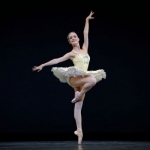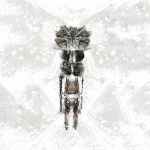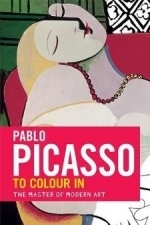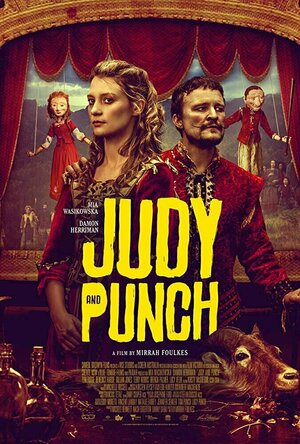
50in1 Piano HD
Music
App
Learn to play the piano, create your own songs and even sing to your compositions! 50in1 Piano HD...

OZEE - TV Shows, Movies & More
Entertainment and Social Networking
App
OZEE Free TV Shows Movie Music Enjoy a rich Video-On-Demand experience with the OZEE app. Choose...
Hazel (1853 KP) rated Picasso: The Colouring Book in Books
Jul 15, 2017
...
Pablo Picasso: To Colour In was published in April 2016 with the intention of using the popular fad to educate readers/colouring book enthusiasts about the techniques and secrets of the great master. Each work included in the book has a brief paragraph explaining what it is (in case you cannot tell) and a few details about Picasso’s intentions or the events happening in his life at the time.
...
Naturally, it would be impossible to produce a book of all Picasso’s recorded works, but the editors of this particular colouring book have carefully selected examples that span the majority of his life, thus encompassing the different styles he experimented with.
The author of the text – presumably Frédérique Cassegrain, who also wrote the biography and information for each included artwork – gives helpful advice about how to colour in the outlined versions of Picasso’s paintings. The paper is thick enough to be suitable for paints, particular Gouache, which is water soluble and easily blended. Alternatively, coloured pencils may be used, preferably of artistic quality, which may be more suitable for those less confident in art and design. Another option, although not mentioned by the author, are felt-tip pens. Usually, these should be avoided due to ink bleeding through the page, however, the paper is single sided, so there is no chance of damaging the following colouring page in the book.
Purchasing Pablo Picasso: To Colour In and completing the book, provides not only hours of fun and relaxation, but an opportunity to discover and understand the artist. Unlike at a gallery where the brain may switch off, being able to go away and return to the book gives us time to absorb the information and concentrate more clearly on the details of each painting.
Opposite each colouring page is a copy of the original in full colour, meaning that, if one desired, one could replicate Picasso’s work as closely as possible. By doing, rather than just looking, we begin to understand the colour choices, piece together the geometric shapes to form an image and begin to understand the thought processes of the artist.
Interestingly, there are two paintings that stand out amongst all the others. These were produced during and after the First World War, a time when Picasso returned to a more classical style of artwork. These are The Pipes of Pan (1923) and The Bathers (1918). Both show a completely different side to Picasso and would not immediately be recognised as his own work. Despite not being entirely life-like, there are no elements of Cubism or Surrealism and the colour palette is altogether natural. Picasso has focused on shading and tone to create a realistic appearance, a contrast to the flattened portraits he is known for.
...
Pablo Picasso: To Colour In will appeal to artists, art historians and other creatives with its contrast of light relief and in-depth knowledge. The book is available online at retailers such as Amazon and The Book Depository from approximately £6. If Picasso is not your thing, there are other artists available in the series of colouring books, including Klimt, Hokusai (Japanese Art), Monet, Van Gogh, Caillebotte and Manet (Impressionists), and Paul Klee. Whatever your preference, prepare to learn whilst you are relaxing and having fun.
Hazel (1853 KP) rated Picasso: The Colouring Book in Books
Dec 7, 2018
...
<i>Pablo Picasso: To Colour In</i> was published in April 2016 with the intention of using the popular fad to educate readers/colouring book enthusiasts about the techniques and secrets of the great master. Each work included in the book has a brief paragraph explaining what it is (in case you cannot tell) and a few details about Picasso’s intentions or the events happening in his life at the time.
...
Naturally, it would be impossible to produce a book of all Picasso’s recorded works, but the editors of this particular colouring book have carefully selected examples that span the majority of his life, thus encompassing the different styles he experimented with.
The author of the text – presumably Frédérique Cassegrain, who also wrote the biography and information for each included artwork – gives helpful advice about how to colour in the outlined versions of Picasso’s paintings. The paper is thick enough to be suitable for paints, particular Gouache, which is water soluble and easily blended. Alternatively, coloured pencils may be used, preferably of artistic quality, which may be more suitable for those less confident in art and design. Another option, although not mentioned by the author, are felt-tip pens. Usually, these should be avoided due to ink bleeding through the page, however, the paper is single sided, so there is no chance of damaging the following colouring page in the book.
Purchasing Pablo Picasso: To Colour In and completing the book, provides not only hours of fun and relaxation, but an opportunity to discover and understand the artist. Unlike at a gallery where the brain may switch off, being able to go away and return to the book gives us time to absorb the information and concentrate more clearly on the details of each painting.
Opposite each colouring page is a copy of the original in full colour, meaning that, if one desired, one could replicate Picasso’s work as closely as possible. By doing, rather than just looking, we begin to understand the colour choices, piece together the geometric shapes to form an image and begin to understand the thought processes of the artist.
Interestingly, there are two paintings that stand out amongst all the others. These were produced during and after the First World War, a time when Picasso returned to a more classical style of artwork. These are The Pipes of Pan (1923) and The Bathers (1918). Both show a completely different side to Picasso and would not immediately be recognised as his own work. Despite not being entirely life-like, there are no elements of Cubism or Surrealism and the colour palette is altogether natural. Picasso has focused on shading and tone to create a realistic appearance, a contrast to the flattened portraits he is known for.
...
Pablo Picasso: To Colour In will appeal to artists, art historians and other creatives with its contrast of light relief and in-depth knowledge. The book is available online at retailers such as Amazon and The Book Depository from approximately £6. If Picasso is not your thing, there are other artists available in the series of colouring books, including Klimt, Hokusai (Japanese Art), Monet, Van Gogh, Caillebotte and Manet (Impressionists), and Paul Klee. Whatever your preference, prepare to learn whilst you are relaxing and having fun.
Emma @ The Movies (1786 KP) rated Judy & Punch (2019) in Movies
Oct 31, 2019
In the town of Seaside, which is nowhere near the sea, Judy lives in something less than domestic bliss with Punch and their baby. Punch's shows are a hit and he's got dreams of grand things, but Judy is the real brains behind the outfit though he'd never admit it.
Judy leaves Punch in charge of the baby while she runs errands but despite the responsibility he gets drunk and an unforgivable accident occurs. In his effort to cover his tracks Punch puts his wife on a journey that leads her to a community in the woods where she can plan her revenge on him for his evil ways.
The film has a very heavy sense of fairy tale about it and certainly the setting wouldn't be out of place in almost any tale you could bring to mind. The location and buildings are perfect and yet somehow didn't seem quite right, this is very much an afterthought though, as I watched it I thought the depiction was good.
The parallels shown between the story of the couple's home life and the puppet show are clear throughout, my only worry is that you might not get a good understanding of that if you aren't aware of the traditional Punch and Judy shows. This wouldn't have been something I'd have thought about before but more and more I talk about things with people and the response is "I've never heard of that"... god I feel old.
Damon Herriman has taken off his Manson mask for this one and I found him to be a very good lead as Punch. He manages to capture the devious side of Punch, and honestly, anyone who can pull off the scene with the baby with a straight face deserves recognition... and yes, I do feel kind of bad for laughing.
Mia Wasikowska (who also starred in Blackbird, review coming soon) had two very different versions of Judy to play. Judy-1 gives us an outgoing and resilient woman, Judy-2.0 is angry and vengeful though there's a happiness in her once she gets to know the community who rescue her. This second incarnation wasn't entirely to my liking, I much preferred the earlier more lighthearted take on her. I can see why the change in her demeanour was fitting it didn't quite feel like a true transformation.
I enjoyed Judy & Punch, it was something different to watch which I always find to be an interesting experience but I'm not sure I'd need to see it again. I was entertained while I sat through it but apart from one scene there was nothing I see myself remembering further down the line.
Just a couple of honourable mentions: I enjoyed the music, the jazzed up classical pieces fit in nicely, and the dog wearing its own ruff? Adorable!
What you should do
I don't think you need to rush out and see this one but if you happen to come across it at some point it might be worth watching.
Movie thing you wish you could take home
It has to be an impish little dog wearing a ruff... because what else would a sensible person pick?!

Piano Maestro by JoyTunes
Education and Music
App
Piano Maestro is a fun and engaging piano practice tool for families and teachers. Chosen by Apple...

Skoove - Learn Piano
Education and Music
App
Learn piano with Skoove. Have you always wanted to play piano, but didn’t know where to start?...

Ballet Expert
Education and Entertainment
App
These 235 Ballet Tuitional Videos cover all aspects of Ballet - from beginners to advanced and from...

Noah’s Ark – An Interactive Children’s Bible Tale
Book and Education
App
This is the classical biblical story of Noah and the ark he built upon God’s instruction to save...


